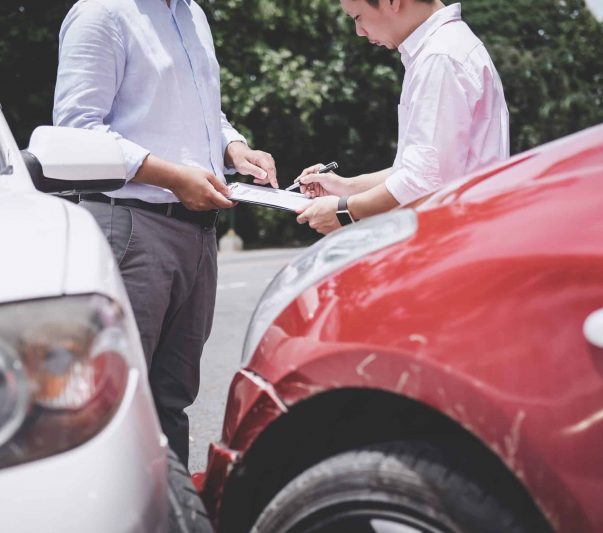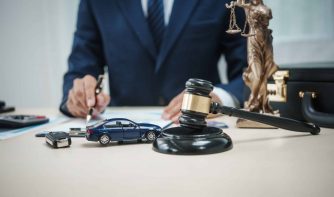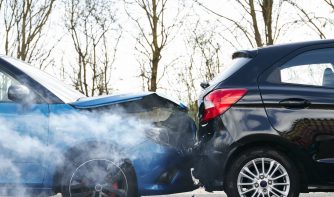Colorado operates under an “at-fault” system for auto collisions. This means that the party found to be at fault is financially responsible for damages resulting from the accident. If multiple parties share fault, compensation is awarded based on each party’s percentage of responsibility. Because of this system, collecting evidence to prove the other party’s fault is crucial to avoid being held responsible for damages.
Understanding the at-fault system informs you of the insurance negotiations process and your legal rights. Our Denver car accident attorneys can help you determine fault in a car crash and secure the compensation you deserve. Call Olson Personal Injury Lawyers at (970) 633-3673 today to schedule a free consultation.
What Is Colorado’s At-Fault System for Auto Accidents?
An at-fault system for auto accidents is a legal framework designed to determine the party financially responsible for damages. In Colorado, the at-fault system assigns fault to the individual who is more liable for an accident. This means that if you are found 50 percent or more at fault, Colorado law bars you from recovering compensation from the other party.
By contrast, no-fault systems require each driver’s own insurance to cover specific damages, regardless of who caused the accident. In this context, there are limited circumstances in which you can sue the other driver for damages. However, in an at-fault system, you have the full legal right to sue the other party for compensation, including the following:
- Medical expenses
- Wage loss
- Property damage
- Emotional trauma
- Pain and suffering
Even in an at-fault system, your insurance company may play a role in cases involving MedPay and uninsured or underinsured motorist coverage. MedPay is a common form of coverage in Colorado that can help cover deductibles or co-pays if you use health insurance. It will pay for medical costs regardless of the percentage of fault. If the at-fault driver lacks the full insurance needed to cover your expenses, underinsured or uninsured motorist coverage can pay for these losses.
It’s best to consult a lawyer who understands Colorado’s at-fault system and how to determine liability in a car collision. Call Olson Personal Injury Lawyers today to speak with a seasoned Colorado attorney about your car accident case—we have a proven track record of getting results.
How Fault Is Proven After a Car Accident in Colorado
Establishing fault is essential for a successful car accident claim in Colorado’s at-fault system. Below, we look at the common types of evidence used to prove liability:
- Police reports document what happened at the scene, whether tickets were issued, and whether arrests were made.
- Witness statements provide a third-party perspective on the scene, which can add validity to your claims of the other driver’s fault.
- Photo and video footage clearly show what took place before and after the accident, including whether the other driver was texting or whether you suffered injuries.
- Vehicle and road damage can help demonstrate the collision’s severity and how it affected property.
- Medical documentation is key to proving damages for injuries and medical expenses.
- Traffic law violations can pinpoint the other driver’s fault by showing they broke the law in some way leading up to the accident, such as texting and driving or being intoxicated.
Insurance companies conduct their own investigations, and fault is not always clear-cut. Our legal team can review your case and gather evidence to prove the other party’s liability.
Examples of Fault in Colorado Car Accident Scenarios
Determining fault is also crucial to securing compensation in a Colorado crash. The following examples illustrate common accident scenarios and how fault is typically assigned under Colorado law.
Rear-End Collisions
The driver who rear-ends the other vehicle is typically at fault for the accident. This is mainly because Colorado traffic laws require motorists to maintain a safe following distance between vehicles. Failure to stop in time to avoid a rear-end collision may indicate distracted driving, speeding, or tailgating. Partial fault may be assigned to the front driver if it can be proven that they hit the brakes suddenly or had a malfunctioning brake light.
Left-Turn Accidents
When a driver makes a left turn and collides with oncoming traffic, they are generally found at fault. This is because Colorado traffic laws expect motorists to accurately judge the gap in traffic and make a sound decision about when to turn. However, the other driver could be held liable if they ran a red light or were found to be speeding. Either way, intersection camera footage can play a significant role in determining fault.
Sideswipes
The driver who makes an unsafe lane change or drifts into another lane is held responsible for a sideswipe accident. These actions violate Colorado laws, which require drivers to stay within a single lane and only change lanes when it is safe to do so. When a sideswipe occurs, the offending motorist typically fails to check their blind spots, use turn signals, or stay focused on the road. Dashcam footage and the vehicle damage can help determine fault in these types of wrecks.
If you or a loved one has been involved in a Colorado collision, do not hesitate to contact Olson Personal Injury Lawyers. During a free consultation, our dedicated attorneys can discuss the specifics of your case and help you understand your rights and options for pursuing a claim. You can also review our testimonials to learn about our clients’ experiences with us.
Car accidents can cause life-altering injuries and leave you with significant financial burdens. If you’ve been hurt due to someone else’s negligence, you may have the right to compensation. Our car accident lawyers are here to help you get justice.
How Comparative Negligence Works in Colorado
With modified comparative negligence, each party’s compensation is reduced by their percentage of fault. However, Colorado uses a 50 percent bar rule to determine how much compensation you can recover in a car accident. This rule limits recoverable damages to those who are 49 percent or less at fault for the incident.
You cannot recover compensation if you are 50 percent or more liable for an accident. For example, if you are 30 percent at fault for an accident that costs $10,000 in damages, you can still secure $7,000 worth of compensation. However, if you are 60 percent responsible for the crash, you are barred from financial recovery.
When Should You Talk to a Colorado Car Accident Lawyer?
We recommend speaking with an attorney immediately after an accident. This helps protect you from saying something that could hurt your case during insurance negotiations and ensures you secure the necessary evidence for your case. Working with a lawyer is especially important in the following situations:
- Disputed fault. If the other driver claims you are primarily liable for the accident, it is essential to have your attorney gather evidence that protects your ability to recover.
- Serious injuries and fatalities. When your case involves extensive medical bills and severe injuries, an attorney can ensure you calculate a fair damage award and pursue the right amount of compensation.
- Complex crashes or commercial vehicles. Accidents with commercial trucks and other vehicles can complicate the number of at-fault parties involved and other aspects of your case. A lawyer can identify all potentially liable individuals and entities.
- Lowball settlement offers or denied claims. If the other party’s insurer offers a settlement that does not fully cover your losses, an attorney can negotiate on your behalf and take the case to court, if necessary.
Our legal team at Olson Personal Injury Lawyers has the knowledge and experience to handle your case, no matter its complexity. Call our law office today for more information.
Contact Our Colorado Auto Accident Attorneys Today
Olson Personal Injury Lawyers offers the experience and personalized guidance required to secure the compensation you deserve. With our free consultations, you do not have to worry about paying anything unless you choose to work with us.
You should not have to navigate a complicated claim alone. Call our law office at (970) 633-3673 today to learn more and start building a solid case.







